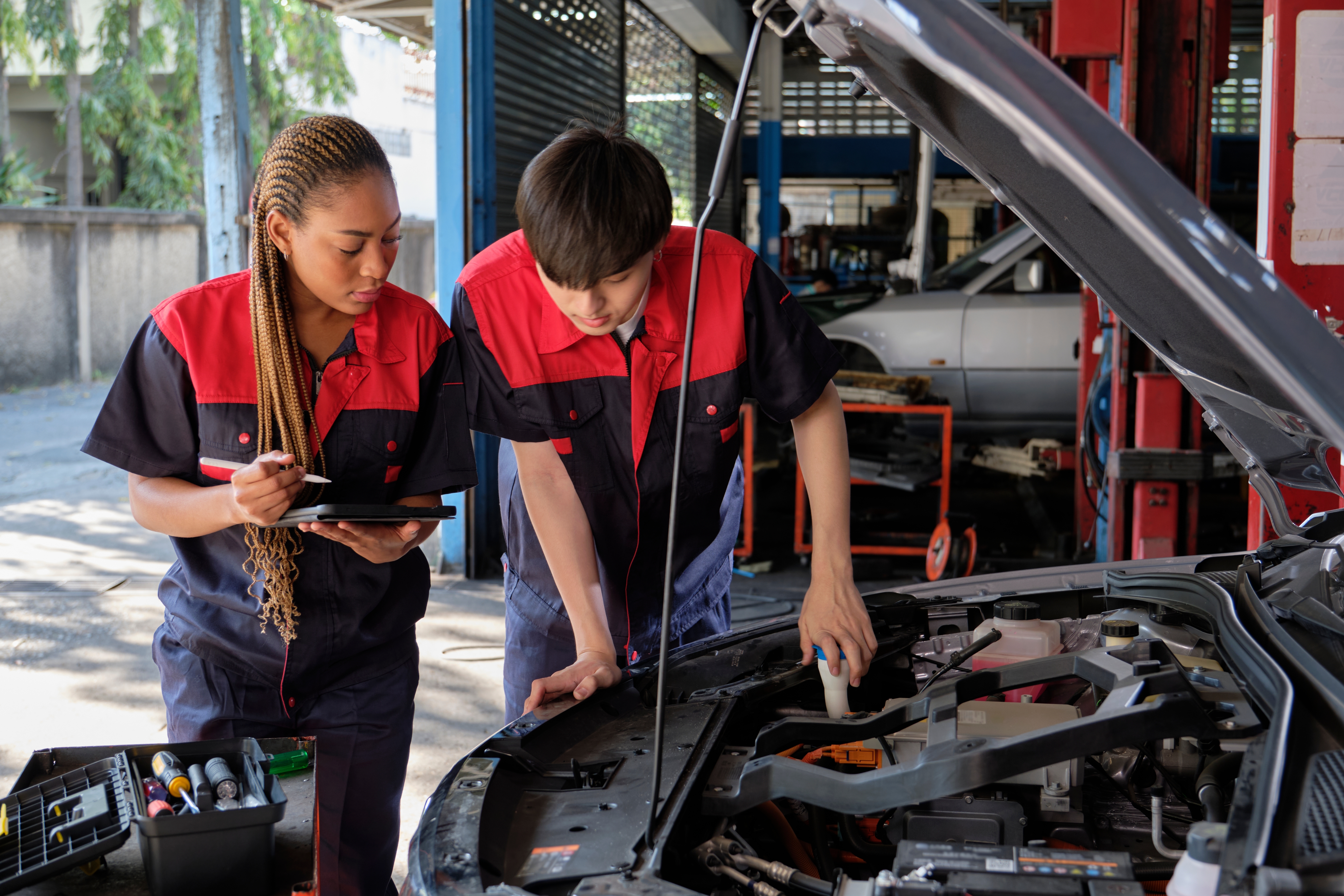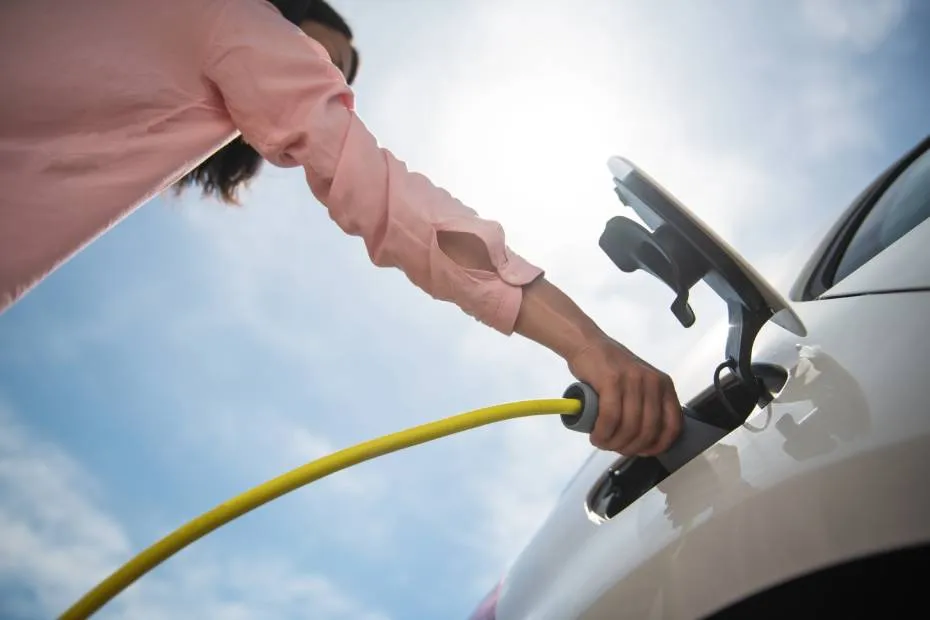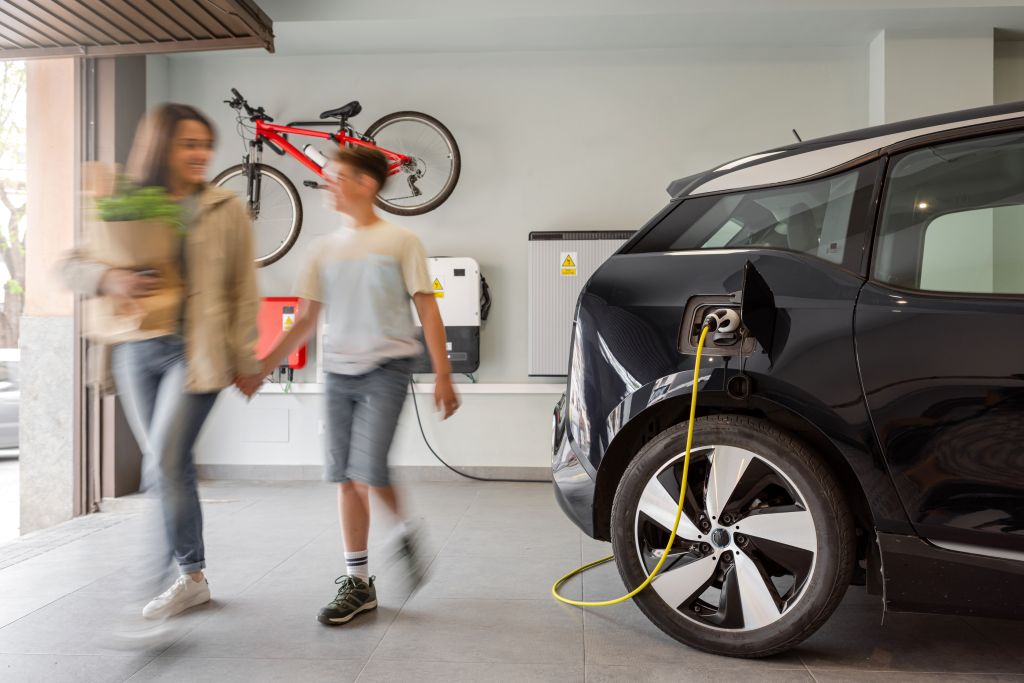Published July 4, 2024 • 5 Min Read
Buying a new car can be an exciting purchase, especially if you’re considering switching from a gas-powered vehicle to an electric vehicle (EV). But beyond calculating the potential gas savings and examining the charging network in your neighbourhood, the next step is to determine what maintenance is required for an EV.
Is electric vehicle maintenance similar to gas-powered vehicles?
EVs share many components with gas-powered cars that require similar maintenance schedules. For instance, just as with gas-powered cars, EVs require replacing cabin filters in the vehicles’ heating, ventilation and air conditioning (HVAC) systems every 20,000 km or so to maintain a high air quality inside the cabin.
Likewise, windshield wiper blades should also be replaced on a similar 6- to 12-month maintenance schedule as gas-powered cars. Other maintenance tasks — such as rotating tires every six months and changing brake fluid, coolant and transmission fluid — should also be kept on similar schedules as gas-powered cars.
What specialized maintenance does an electric vehicle require?
Some maintenance tasks are specific to EVs, one of which is installing special tires. These specific tires are needed since EV battery packs weigh more than ICE engines, and this causes tires to wear more quickly, as does the nearly instant torque EVs possess. This means EV tires typically need to be replaced every 50,000 km or so, compared to about every 90,000 km for gas-powered cars.
Windshield replacements are also typically needed more often than a gas-powered car. This is because if there is damage close to an embedded sensor, the damaged area typically cannot be repaired, as it may affect the sensor’s functionality. EVs use windshield sensors and cameras to bolster the capabilities of advanced driver assistance systems (ADAS), which offer drivers benefits such as lane-keeping assistance and adaptive cruise control.
Thus, if the embedded windshield technology does not function properly after a repair, it will cause the EV’s ADAS to malfunction. Furthermore, recalibrating the ADAS can be costly and time-consuming.
How much does it cost to maintain an electric vehicle?
The good news is, in most cases, EVs have lower maintenance costs than gasoline-powered cars, which utilize internal combustion engines (ICEs). This is because EVs contain fewer moving parts in their engines, and according to the Canadian Automobile Association, this saves EV owners an average of 40% to 50% in maintenance costs.
Another maintenance cost advantage EVs have is they do not require oil changes or for transmission fluid to be replaced. For gas-powered cars, you should usually get an oil change around two or three times a year — depending on how much you drive — and it costs between $50 and $80 each time.
Brake repairs are one of the most expensive maintenance costs for vehicle owners, as a complete brake repair can cost more than $1,000, and replacing brake pads typically costs around $200. EVs have another advantage here since they utilize regenerative braking, a process that involves converting motion to electricity to slow a vehicle down. Thanks to regenerative braking, EV brakes last longer, and in some cases, drivers can get as many as 150,000 km before brake pads need replacing.
However, on occasion, an EV can have higher maintenance costs than a gas-powered car due to the specialized skill set required for repairs. But as EVs go mainstream, institutions across Canada are adapting their educational programs to upskill students on EV technology. So, as Canada builds a strong pipeline of skilled EV mechanics, instances where EVs have higher maintenance costs than gas-powered vehicles are likely to be a thing of the past.
Is hybrid vehicle maintenance different to fully electric vehicles?
And what about a hybrid vehicle, which uses both an ICE engine and an electric motor? A hybrid vehicle offers owners several advantages — such as lower emissions than a gas-powered car and greater flexibility than an EV, as it can be refueled at traditional gas stations. However, since it uses two engines, it requires the maintenance costs and tasks associated with both types of engines.
This means you’ll need to get your hybrid vehicle’s oil changed regularly, conduct routine maintenance on spark plugs and timing belts and replace the electric battery. Since replacing parts on hybrid engines requires specialized labour, it can also cost more.
How long does an electric vehicle battery last?
A study by the Canadian Vehicle Manufacturer’s Association (CVMA) found that EV batteries, on average, last between 15 and 18 years — and can last as long as 21 years, in some cases.
This long lifespan for EV batteries means that it’s possible that the battery in your car could outlive your EV, especially with further innovation, which is likely to extend battery lifespans even more.
Meanwhile, EVs also come with battery warranties. According to CVMA, the standard battery warranty is between 8 to 10 years or 160,000 km, although some vehicle manufacturers offer warranties for as long as 12 years.
Calculating the ownership cost of an electric vehicle over time
To help prospective car buyers get a ballpark idea of estimated maintenance costs for different EVs and gas-powered cars, you can use RBC’s Electric Car Cost Calculator.
This article is intended as general information only and is not to be relied upon as constituting legal, financial or other professional advice. A professional advisor should be consulted regarding your specific situation. Information presented is believed to be factual and up-to-date but we do not guarantee its accuracy and it should not be regarded as a complete analysis of the subjects discussed. All expressions of opinion reflect the judgment of the authors as of the date of publication and are subject to change. No endorsement of any third parties or their advice, opinions, information, products or services is expressly given or implied by Royal Bank of Canada or any of its affiliates.
Share This Article






